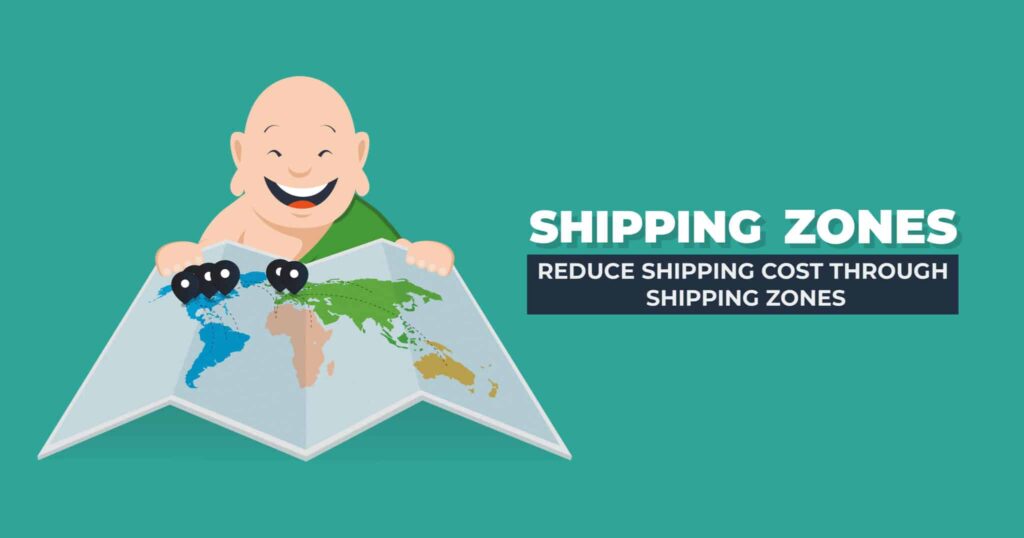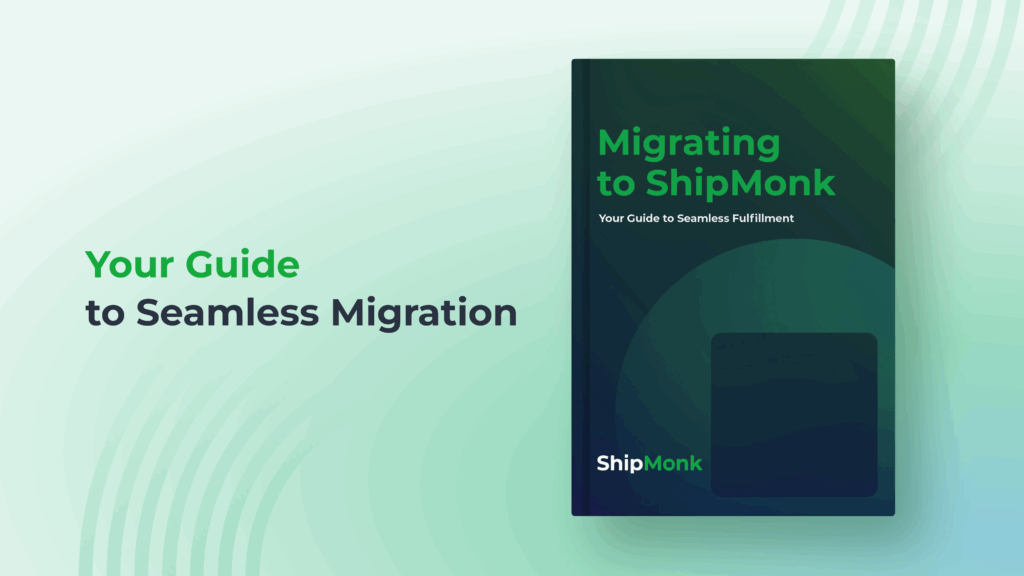There are many noteworthy zones—the Danger Zone, the Twilight Zone—but you didn’t come to a 3PL blog to talk Kenny Loggins or Rod Serling; you’re here for impactful topics related to ecommerce. And seeing how they impact your shipping timelines and shipping costs, the topic of Shipping Zones definitely needs to be explored.
Shipping zones exist as a means for major shipping carriers to break down geography and dictate (when paired with package weight) how much to charge for shipping. Shipping zones may also impact how long a shipment will take, depending on where the package is going and what fulfillment center it came from. As shipping costs and shipping speed critically affect customer expectations and ecommerce brand performance, it’s vital that knowledge of shipping zones inform your ecommerce fulfillment strategy. That’s what we’re here for.
When you use shipping zones to your advantage, your ecommerce business can reduce shipping costs and maximize shipping efficiency, thus leading to happier customers. So buckle up for the rest of this blog; we’re revvin’ up our ecommerce engines to help you save money and time!
Shipping Zones Explained
Major shipping carriers such as FedEx, UPS, USPS, and DHL use shipping zones to determine the shipping cost of an ecommerce order. The United States, for example, is broken down into Zones 1 – 8 for domestic shipments. These zones are grouped not by miles, but by the zip codes spanning from the point of origin (where the ecommerce order is shipped out) to the point of destination (the end customer).
Each shipping zone has specific shipping rates that apply to ecommerce orders being delivered to addresses within that zone’s range. When determining shipping costs, major shipping carriers look at zones to determine distance traveled, which corresponds to an approximate number of days from when the package is shipped to when it arrives at an end customer’s door.
Traditionally, shipping zones are dynamically calculated based on where an ecommerce order is shipped from. Ergo, two packages going to the same destination, but coming from two unique origin points, could have completely different shipping costs and times because they are traveling through different zones to reach that customer.
Taking a ShipMonk example, (where Zone 1 is closest to you and Zone 8 is farthest from you) if you’re shipping from Los Angeles to St. Louis, you’re shipping to Zone 7. But if you’re shipping from Dallas to St. Louis, you’re shipping to Zone 4.
Shipping zones become even trickier when you take into account the fact that each major shipping carrier sets its own specific shipping zones and associated shipping rates.
Shipping Zones for Major Shipping Carriers
Each major shipping carrier sets its own pricing, delivery window regulations, and shipping zone parameters. In terms of shipping zones, the variation is rooted in the fact that different zip codes may reside in different zones for each carrier (determined by the extent of that carrier’s network).
Since shipping zones contribute largely to an ecommerce company’s shipping costs and delivery time capabilities, it is important to understand the domino effect. For instance, based on the zip codes for your fulfillment centers and points of destination, a 2-Day shipping zone may be possible for one carrier, but not another. Let’s explore specifics for some of those major shipping carriers.
UPS Shipping Zones
UPS has its own tool for customers to download shipping zone charts. All you have to do is input your package’s point of origin zip code. The shipping zone chart that generates will show which zip codes fall into each UPS shipping zone based on your ecommerce order’s fulfillment location. This shipping zone chart doesn’t include pricing though; to calculate that UPS has an additional shipping costs calculator.
USPS Shipping Zones
USPS has a variety of shipping services to meet different price points and delivery windows. While many of their shipping services have fixed rates, others are affected by shipping zones. If you check out this USPS zone tool, you can get charts that show you what zip codes fall into what shipping zones. Pricing is later determined by that zone chart. At a glance, USPS zone services include Priority Mail Express, Priority Mail, USPS Retail Ground, Bound Printed Matter, and First-Class Mail packages. Shipping services that are not zoned include: First-Class Mail letters, Library Mail, Media Mail, and USPS Marketing Mail.
FedEx Shipping Zones
FedEx publishes extremely detailed shipping cost reports each year, breaking down package prices by weight and shipping zones. The 2023 shipping costs breakdown is already available. As with the other major shipping carriers, zip codes are used to determine the number of shipping zones an ecommerce order travels and, ergo, how much it will cost to send that package.
Shipping Zones at a Glance
Though the major shipping carriers have their own tools, calculators, and specific pricing, in general UPS, USPS, and FedEx use a similar shipping zones template. If you are estimating the number of zones an ecommerce order has to travel, the below 2022 reference chart can give you an idea of general zone radiuses.
| Shipping Zone | Mile Radius (from point of origin) |
| Zone 1 (local deliveries) | 50 mile radius |
| Zone 2 | 51 – 150 mile radius |
| Zone 3 | 151 – 300 mile radius |
| Zone 4 | 301 – 600 mile radius |
| Zone 5 | 601 – 1,000 mile radius |
| Zone 6 | 1,001 – 1,400 mile radius |
| Zone 7 | 1,401 – 1,800 mile radius |
| Zone 8 | 1,801 + mile radius |
| Zone 9 | Freely Associated States |
***Note, if you’re an ecommerce business owner, keep in mind that major shipping carriers may offer better rates to high-volume shippers, i.e. 3PL providers like ShipMonk. There are other shipping perks to working with our 3PL too. With shipping zones varying from carrier to carrier, calculating shipping costs and transit times can be challenging, especially for new ecommerce brands that aren’t familiar with the ins and outs of shipping. At ShipMonk, we’ve made this process a whole lot easier with shipping methods that utilize the exact same zones, regardless of the carrier delivering the package.
How ShipMonk Uses Shipping Zones to Lower Shipping Costs
The fewer zones a package has to “cross” before reaching its final destination, the better. Using multiple warehouse or fulfillment center locations is the best way to minimize those zones. A 3PL like ShipMonk that has an international reach of fulfillment centers puts you in that prime position.
In addition to a wide array of United States domestic fulfillment center locations from the West Coast to the East Coast, we have fulfillment centers in Canada, Mexico, and the United Kingdom. As shipping internationally can be very expensive for ecommerce merchants, ShipMonk’s fulfillment reach means your ecommerce orders don’t have to travel halfway across the world to reach customers. We harness our proprietary 3PL software to automatically assign orders to locations with the best shipping rates for their destinations.
The fact is, if you’re managing your order fulfillment in-house, splitting inventory across multiple locations can get costly. But at ShipMonk we’re able to leverage our scale of operations to offer you more shipping options at a much lower rate.
Just as you drive your ecommerce brand toward growth and scalability, we push ourselves the same way so your quest for ecommerce global domination is easier year by year. With an ever-expanding global footprint of fulfillment centers our goal to minimize shipping costs for clients is actively being realized. Just this year we expanded across the U.S. with four new locations, in addition to Canada and Mexico. And we’re just getting started in the US, and internationally.
Our UK fulfillment center, for example, provides direct access to the British Isles and all of Europe. All in all, with every “win” we have in expanding our 3PL operation, it is a win for the ecommerce brands we’re privileged to partner with because it minimizes the shipping zones their orders need to travel, saving them on shipping costs on a daily basis.
Other Shipping Cost Factors to Consider
1. Order Weight
Remember, shipping zones alone do not produce your shipping prices; another major contributor is billable weight (and dimensions) of the item being shipped. A general rule of thumb is that the larger and/or heavier a package is, the more the price will increase as the number of zones the package travels increases. Let’s look at a sample weight and zone rate table from USPS Commercial – Priority Mail.
| Weight | Zones 1 & 2 | Zone 3 | Zone 4 | Zone 5 | Zone 6 | Zone 7 | Zone 8 | Zone 9 |
| 1lb | $9.00 | $9.40 | $9.75 | $10.85 | $11.15 | $11.90 | $12.60 | $20.40 |
| 2lbs | $9.55 | $10.20 | $11.00 | $12.75 | $13.65 | $15.75 | $17.10 | $31.75 |
| 3lbs | $10.20 | $10.95 | $12.05 | $14.70 | $16.40 | $18.90 | $22.20 | $42.15 |
| 4lbs | $10.85 | $11.70 | $12.75 | $15.95 | $19.30 | $22.60 | $25.05 | $48.65 |
| 5lbs | $11.55 | $12.50 | $13.45 | $16.75 | $21.35 | $25.80 | $28.75 | $56.15 |
Major shipping carriers increase their pricing structures every year given inflation, peak season, surcharges, and other supply chain requirements. The point this example chart illustrates is how shipping cost increases from zone to zone are smaller for lighter packages while shipping costs go up more significantly zone by zone if you’re shipping heavy items.
***Note, Many of the major shipping carriers apply a billing methodology commonly known as Dimensional Weight when calculating the shipping cost of their packages. Dimensional weight is calculated by taking the package’s volume and dividing it by a DIM factor determined by the shipping carrier. If the dimensional weight exceeds the package’s actual weight, then the package will be billed based on the dimensional weight rather than the actual weight.
2. Time Constraints
Today’s competitive ecommerce landscape means brands must accommodate customers at every turn. A huge part of that is turnaround time. As in, how long do they have to wait to receive ecommerce orders. The balance between keeping your margins healthy and offering affordable, fast shipping can be tricky to master but is doable, especially when you work with a 3PL with expertise in 2-Day shipping, as well as other shipping options. That being said, shipping costs most certainly skyrocket the faster packages need to move across shipping zones. As such, it is critical that you take zones into account when offering overnight shipping, 2-Day shipping, or any other expedited shipping service. Speed across zones will cost you, and if you don’t follow through on your time commitment to a customer, that will cost you in a different way.
3. Methods of Transportation
There are two types of delivery service options: air shipping and ground shipping. Each of these influences how rapidly ecommerce orders travel across zones, and at what price. Air shipping (i.e. cargo shipping via airplane) is significantly more expensive but the fastest way to transport goods across shipping zones. This is a better budget option if you’re shipping orders in bulk vs. individual items at a time. If not, you may want to reconsider your expedited delivery options because getting one small package across a handful of shipping zones is going to cost you a lot.
Meanwhile, ground shipping uses trucks, vans, and/or cars to transport ecommerce orders. Ground shipping is relied on for shorter distances, so it’s great for orders going out to customers within the same zone as the fulfillment center or warehouse they’re coming from. Though, in terms of fulfilling your delivery promise, remember that the exact time it will take that order to reach a customer depends on the zip code of the origin and zip code of the destination. 3PLs like ShipMonk make it much easier to ship a package utilizing minimal zones thanks to our many state-of-the-art fulfillment centers.
4. Surcharges
Most major shipping carriers add surcharges that increase shipping rates past what has been calculated for an ecommerce order’s shipping zones and weight. There are a number of reasons shipping may cost you extra. The main surcharges to be aware of are:
- Delivery Area Surcharges (DAS) and Extended Delivery Area Surcharges (EDAS) that apply to shipments made to and from locations in remote areas
- Peak season surcharges when the holiday shopping season arrives—some of the major shipping carriers applied peak season surcharges that haven’t gone away since Covid
- Fuel surcharges—which are always present regardless of fuel cost, but are adjusted throughout the year based on changing fuel costs as other charges may or may not be implemented.
Thankfully, ShipMonk has a way to help ecommerce brands in this area of the 3PL journey too: our Virtual Carrier Network. We could write a whole blog about this (and we did) explaining the benefits it brings ecommerce brands in terms of shipping rates, shipping timeframes, shipping services, etc. However, in terms of surcharges we’ll just highlight the fact that our Virtual Carrier Network allows us to standardize the common surcharges that ecommerce merchants experience i.e. you don’t pay a different price, and don’t face an array of surcharges when rate shopping based on the major shipping carrier you use. How’s that for saving you money?
Take the “Danger” Out of Dealing with Shipping Zones
Although there are many factors that can rack up shipping rates for an ecommerce brand, shipping zones definitely play one of the biggest roles, and as such can have the biggest impact on the bottom line for a business that’s trying to grow and scale across the country and internationally. The good news is that working with a 3PL like ShipMonk can reduce the stress shipping zones may add to your margins. ShipMonk does this by:
1.) Offering fast shipping options and the best shipping rates thanks to the adaptable nature of our Virtual Carrier Network that combines the best aspects of rate shopping with more customizable, transparent features.
2.) Providing the option to distribute your inventory across our global network of fulfillment centers, which enables ecommerce brands to keep their SKUs closer to customers, thus reducing the number of zones ecommerce orders have to cross through. Note that other fulfillment providers like Amazon require you to split your inventory.
Overall, working with a 3PL to adjust your ecommerce fulfillment strategy in the above ways doesn’t just benefit your bottom line; it allows you to better meet customer expectations and outshine competition. If you’re ready to reduce your ecommerce order fulfillment times and costs by handling shipping zones more efficiently, contact ShipMonk today!





